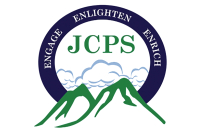Bee balm
It is in the mint family, Lamiaceae. It exhibits the common mint characteristics of square stem and opposite leaves. It grows to three feet tall where it is topped by a rich red, round flowering head. The head or cyme may be up to four inches across composed of several tubular flowers arrayed in a circle.
Bee balm likes moist soil and is pretty shade tolerant. It is often found along wooded stream banks in Western North Carolina but also makes its way to road shoulders (especially the Blue Ridge Parkway) and the edges of openings and spoil areas.
I asked Izzy to show me where she got her bee balm and she led me down a dim path in the woods along the little stream that borders our yard. Bee balm, like all mints, spreads by rhizomes and often forms small colonies.
After a hundred yards or so down the trail, Izzy stopped. “It’s around here somewhere,” she said, “just look for the flowers.” And sure enough, about 20 or 30 yards ahead of us a couple of dozen scarlet inflorescences glowed from the shadowy forest.
While bee balm is shade tolerant, it also thrives in full sun and has many landscape applications. It blooms from late June through August and makes a great perennial border and/or adds color to any wildflower garden. It also attracts pollinators like hummingbirds, butterflies and bees and can be a colorful and useful addition in your vegetable garden.
Bee balm, like most colony forming plants, will, over time, begin to thin in the center. You can avoid this and keep your colony dense and beautiful by dividing the roots every two to three years. This is best done in fall or early spring. Dig up the rootstock and remove the older inner section, then replant the divisions a foot or so apart. Bee balm may be grown from seeds or rootstock.
Related Items
Native Americans used bee balm for a variety of ailments like headache, fever, digestive problems and oral care. The antiseptic thymol, which is widely used in a variety of mouthwashes, occurs naturally in bee balm.
Before the colonists dumped King George’s tea in the Boston Harbor, the Oswego Indians were enjoying beverages brewed from Monarda didyma. The sudden shortage of tea led the colonists to embrace this beverage and thus Monarda didyma became Oswego or “liberty” tea. The name bee balm comes from the use of the crushed leaves of the plant to relieve the pain of bee stings.
Bee balm should be blooming now along the Parkway. It is generally quite prevalent around the Waynesville Overlook and in the vicinity of Big Witch Gap.
Don Hendershot can be reached at This email address is being protected from spambots. You need JavaScript enabled to view it.









